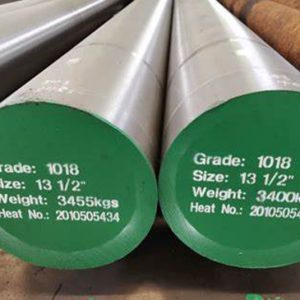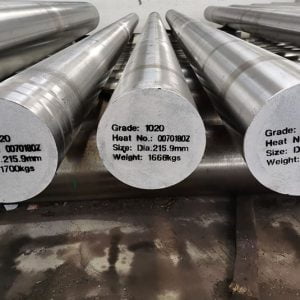Introduction
Steel is one of the most widely used materials in the world, and its different grades serve various applications across industries. Among these, 1045 steel is particularly popular due to its balance of strength, hardness, and machinability. However, there are many equivalent grades of steel that can offer similar properties. This comprehensive guide will help you understand what 1045 steel equivalent means, the different equivalents available, and how to choose the right one for your specific needs.
What is 1045 Steel?

Composition and Properties
1045 steel, also known as AISI 1045, is a medium-carbon steel with a carbon content of approximately 0.45%. This steel grade is known for its good combination of strength, hardness, and wear resistance. The typical chemical composition of 1045 steel is as follows:
- Carbon (C): 0.43-0.50%
- Manganese (Mn): 0.60-0.90%
- Phosphorus (P): ≤ 0.040%
- Sulfur (S): ≤ 0.050%
Common Uses
1045 steel is widely used in industries for manufacturing gears, shafts, axles, bolts, and forged connecting rods. Its properties make it suitable for applications requiring a balance of strength and toughness.
Understanding Steel Equivalents
What are Steel Equivalents?
Steel equivalents are grades of steel from different standards and specifications that offer similar properties to a given steel grade. These equivalents can be useful when the original grade is not available or when cost considerations make an alternative grade more attractive.
Importance of Knowing Equivalents
Knowing the equivalents of 1045 steel can help manufacturers and engineers choose suitable materials that meet the requirements of their projects without compromising on quality or performance.
Comparing 1045 Steel Equivalents
Equivalent Grades Across Different Standards
1045 steel has several equivalents in other standards and specifications. Here is a comparison of some common equivalents:
| Standard | Equivalent Grade | Chemical Composition (Carbon %) | Key Properties |
|---|---|---|---|
| SAE/AISI | 1045 | 0.43-0.50 | Medium-carbon, good strength |
| DIN | C45 | 0.42-0.50 | High strength, good machinability |
| JIS | S45C | 0.42-0.48 | Good hardness, wear resistance |
| BS | EN8 | 0.40-0.45 | High tensile strength |
| ASTM | A830-1045 | 0.43-0.50 | Good mechanical properties |
Detailed Analysis of Key Equivalents
DIN C45
DIN C45 is a medium-carbon steel equivalent to 1045 steel in the DIN standard. It is known for its high strength and good machinability, making it suitable for mechanical engineering and automotive components.
JIS S45C
JIS S45C is the Japanese equivalent of 1045 steel. It is used widely in Japan for its good hardness and wear resistance. S45C is often used in applications such as gears, shafts, and other mechanical parts.
BS EN8
BS EN8 is a British standard equivalent of 1045 steel. It offers high tensile strength and is used in manufacturing parts that require good strength and moderate wear resistance.
ASTM A830-1045
ASTM A830-1045 is an American standard equivalent to 1045 steel, providing similar mechanical properties and applications. It is commonly used in construction, automotive, and manufacturing industries.
Factors to Consider When Choosing 1045 Steel Equivalent

Mechanical Properties
When selecting an equivalent grade, it’s essential to compare the mechanical properties such as tensile strength, hardness, and toughness. Ensure that the equivalent grade meets or exceeds the requirements of your application.
Availability and Cost
Availability and cost are significant factors. Sometimes, the equivalent grade may be more readily available or cost-effective compared to 1045 steel. Evaluate these aspects to make an economical decision without compromising quality.
Application Requirements
Consider the specific requirements of your application, such as environmental conditions, load-bearing capacity, and durability. Choose an equivalent grade that best suits these needs.
Applications of 1045 Steel and Its Equivalents
Automotive Industry
In the automotive industry, 1045 steel and its equivalents are used to manufacture parts like gears, shafts, and axles due to their strength and wear resistance.
Machinery and Equipment
1045 steel equivalents are also used in machinery and equipment manufacturing, particularly for parts that need to withstand high stress and impact.
Construction
In the construction industry, these steels are used for structural components, reinforcing bars, and other elements that require durability and strength.
Conclusion
Understanding 1045 steel equivalents is crucial for making informed decisions in material selection. By comparing different standards and their equivalent grades, you can find suitable alternatives that meet your project’s requirements. Always consider mechanical properties, availability, cost, and specific application needs when choosing an equivalent grade.
FAQ
What is 1045 steel used for?
1045 steel is commonly used in manufacturing gears, shafts, axles, bolts, and forged connecting rods. It is valued for its balance of strength, hardness, and machinability.
What is the equivalent of 1045 steel in DIN?
The equivalent of 1045 steel in DIN is C45, which offers similar properties such as high strength and good machinability.
How does JIS S45C compare to 1045 steel?
JIS S45C is the Japanese equivalent of 1045 steel, known for its good hardness and wear resistance, making it suitable for gears, shafts, and mechanical parts.
What are the benefits of using 1045 steel equivalents?
Using 1045 steel equivalents allows for flexibility in material selection, especially when the original grade is unavailable or when cost considerations are important. It ensures that the material properties meet the project requirements without compromising quality.
Can 1045 steel equivalents be used interchangeably?
Yes, 1045 steel equivalents can be used interchangeably if they meet the specific requirements of your application. However, always verify the mechanical properties and standards to ensure compatibility.





